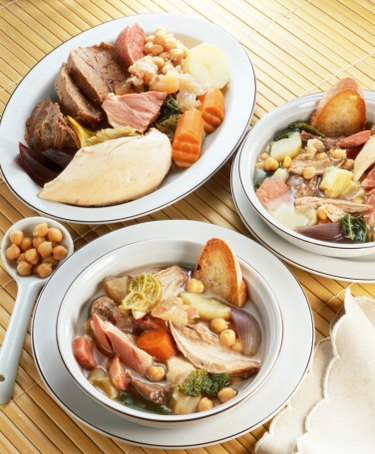
To run across a recipe that calls for beef tips is bound to happen. If you're making beef stew, or beef bourguignon or running through your grandmother's cookbook, every now and then, the recipe will ask you to find beef tips as the main ingredient. But when you go to the grocery store, searching the rows of fresh meat, there is no label that specifically says: Beef Tips. This mystery meat is actually easy to find, as long as you know how you are planning to cook it.
Where on the Cow?
Video of the Day
In some cookbooks, there is a very simple diagram of a cow, complete with chalk lines and numbers designating which part of the cow what cut comes from. Chuck is by the shoulder; the foreshank and brisket are below that; rib and short loin come from the back, while the short plate and flank are found under the belly; then there's the sirloin and round towards the rear end. No beef tip section. This is not an accidental omission.
Video of the Day
Expert Advice
According to Mike Martens, a Milwaukee butcher for the last twenty-five years, beef tips can be made from any meat the customer wants to pay for. Beef tips are nothing more than beef cut into cubes. These cubes will usually be found in beef stews and can be made from even the toughest beef, depending on how long the meat will be cooked.
Tips for Beef Tips
The tougher the meat, the longer it will need to be cooked, usually with some kind of an acid base like tomato sauce or wine.
For beef stew, chuck or round would be fine, as long as it simmers for a few hours.
If cooking the meat for a shorter time, as in beef stroganoff, use a more tender cut of meat such as tenderloin.
Since any type of meat can be used for beef tips, purchasing a roast and cutting it up yourself can sometimes be the less expensive option.
Advice From the White House

According to "The White House Cookbook" from 1916, "A great deal of success in roasting depends on the heat and goodness of the fire; if put into a cool oven it loses its juices, and the result is a tough, tasteless roast; whereas, if the oven is of the proper heat, it immediately sears up the pores of the meat and the juices are retained."